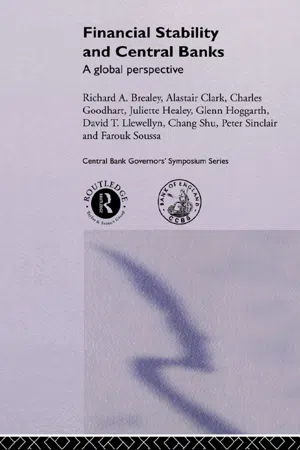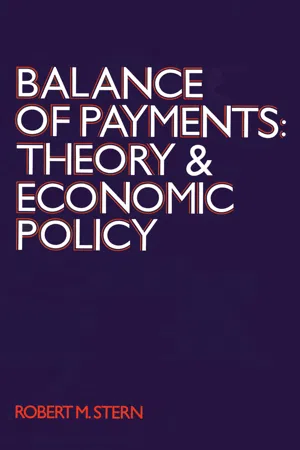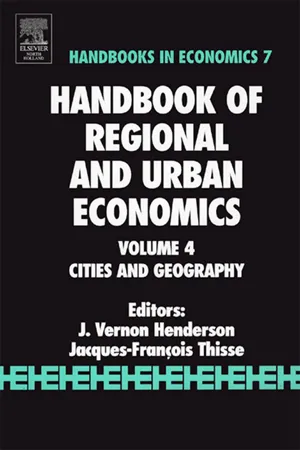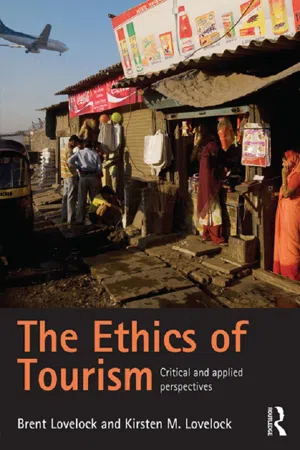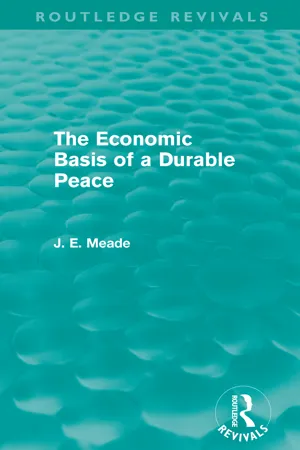Capital Mobility
Capital mobility refers to the ease with which financial capital can move across borders to seek the highest returns. It is influenced by factors such as interest rates, exchange rates, and government policies. High capital mobility can lead to increased investment and economic growth, but it can also make countries more vulnerable to financial crises and speculative movements.
6 Key excerpts on "Capital Mobility"
- eBook - ePub
Financial Stability and Central Banks
A Global Perspective
- Richard Brearley, Juliette Healey, Peter J N Sinclair, Charles Goodhart, David T. Llewellyn, Chang Shu, Richard Brearley, Juliette Healey, Peter J N Sinclair, Charles Goodhart, David T. Llewellyn, Chang Shu(Authors)
- 2001(Publication Date)
- Routledge(Publisher)
...The timing of these developments is different, but the end result is essentially the same. Financing problems for the central bank are very much the same for both direct and portfolio inflows, too. Both of them generate inflows on the capital account of the balance of payments. Both threaten to push up the monetary aggregates and/or the exchange rate, and thereby alter the course of inflation. This means that there is really no intrinsic workable distinction between ‘beneficial’ and ‘unhelpful’ international capital movements. All capital movements, whether direct or portfolio, long-term or short-term, are ultimately rather similar in their effects, and in the challenges they pose for central banks as they attempt to retain financial and monetary stability in the face of them. Another way of thinking about international capital movements, whether direct or portfolio, is that they give poorer, faster-growing countries a quicker route to prosperity than the prospect of building up capital from domestic savings alone. The latter path leads eventually to higher national income, but may take many generations to accomplish. The former allows the country to raise its domestic product towards international levels much more swiftly. Effectively, it pre-empts the capital stock it would otherwise have accumulated itself over decades or centuries. The price of the quick route is the transfer of profit or interest income to overseas creditors or equity-holders. In normal circumstances it can be shown that this price is well worth paying. 2 7.2.4 International capital movements as intertemporal trade Yet a further aspect of international capital movements is that they permit residents to smooth out their consumption in the face of random shocks to their technology, endowments or resources (or to consumer preferences, at home or abroad, which create disturbances in the country’s terms of trade)...
- eBook - ePub
Balance of Payments
Theory and Economic Policy
- Robert Stern(Author)
- 2017(Publication Date)
- Routledge(Publisher)
...We shall go one step further and confine our attention to transactions in bonds, leaving it to the reader to make the necessary emendations in what follows with regard to equity investments and bank lending. It is a matter of common observation that capital by no means moves freely across national boundaries. If it did, long-term borrowers and lenders would operate in each other’s capital market, taking advantage of differences in the costs of borrowing and rates of return and in the process reducing or even removing such differences altogether. In actuality, we have to make explicit allowance for various impediments to capital movements, which, aside from risk-related factors, involve such things as monopolistic influences, imperfect information, and government restrictions of different kinds. As a means of understanding the factors involved in the purchase and sale of bonds and other financial assets, it may be useful to proceed within a somewhat formal framework. Let us for this purpose draw upon a portfolio model of investor behavior. Such a model focuses our attention on the stock demand for financial assets in relation to returns and risk subject to the overall wealth constraint of the investor. Thus, the decision to borrow or lend and to buy or sell outstanding issues is more than a matter of comparing domestic and foreign rates or yields. Table 8.1 U.S. Assets Abroad at Yearend, by Area, 1970 a (Billions of Dollars) a Preliminary. SOURCE : U.S. Department of Commerce, Survey of Current Business (October 1971), p. 21. Table 8.2 U.S. Liabilities to Foreigners at Yearend, by Area, 1970 a (Billions of Dollars) a Preliminary; n.a.—not available. SOURCE : U.S. Department of Commerce, Survey of Current Business (October 1971), p. 21. Static Portfolio Analysis Suppose that we have an investor whose portfolio consists of domestic and foreign financial assets...
- eBook - ePub
Handbook of Regional and Urban Economics
Cities and Geography
- V. Henderson, J.F. Thisse(Authors)
- 2004(Publication Date)
- North Holland(Publisher)
...As emphasized in most studies surveyed, mobility makes it difficult to efficiently tax or subsidize mobile factors, whatever they are, capital or labor. To a certain extent, the effects of labor and Capital Mobility are alike, which is a bit surprising. There are however some differences. First, labor income tax base tends to be empirically much broader than that of capital income. Second, and more importantly, the similarity hinges upon the assumption that the national governments are concerned by the welfare of all mobile nationals regardless of their location. Another distinction concerns the possibility of formal or informal discrimination between an incoming factor of production and a long time established one. In the case of Capital Mobility and given the source based principle, it often happens that foreign capital income is subject to a lower tax, if any, than domestic capital income. In the case of labor mobility, and specifically of low skill labor, the residence based principle applies and differential tax treatment is hardly conceivable except in the treatment of illegal migration. Regardless of these differences, we have seen that in general, factor mobility makes it difficult to conduct the same redistribution policies as would be conducted in autarky. This is where one thinks of centralization or cooperation. We have seen that in a number of cases the type of equilibrium with lower redistribution was of the Pareto-inferior type. In other words, cooperation is feasible. However, in many real-life asymmetrical situations, the non-cooperative solution is not of that type. Further, besides regional income redistribution, there is another issue, namely that of redistribution across regions for which a certain centralized compelling authority is unavoidable. We have also pointed out another possible pitfall of cooperation which arises because a coordinated setting of all relevant tax instruments may not be a realistic perspective...
- eBook - ePub
- Eric J. Arnould, Craig J Thompson(Authors)
- 2018(Publication Date)
- SAGE Publications Ltd(Publisher)
...10 Global Mobilities Fleura Bardhi City, University of London Marius K. Luedicke City, University London Zahra Sharifonnasabi, Queen Mary University of London Chapter Overview This chapter discusses: how technological transformations and global politico-economic interdependences have led to the rise of global mobilities; how global mobilities can take different forms from economic and political migration to global nomadism to expatriatism; how for consumers, global mobility can be a source of capital accumulation, potential social mobility, as well as consumer empowerment; how global mobilities can also be challenging and may result in feelings of homelessness, ontological insecurity, and social isolation. Introduction This chapter examines the phenomenon of global mobilities from a consumer culture theory perspective, focusing specifically on the cross-border movements of people. Human global mobilities take many forms, from economic and political migration, through professional and educational sojourning and expatriation, short-term business and leisure international travel, to global nomadism. A growing social, economic, political, and cultural interconnectedness of people, institutions, and nations across the globe has contributed to an unprecedented level of people crossing national borders. Today, over 247 million individuals live permanently outside of their countries of birth. International travel, currently accounts for one-twelfth of world trade (World Bank 2016). Global mobilities not only affect consumers who emigrate or travel to foreign countries, but also affect consumers at home, particularly under current cultural condition known as ‘liquid modernity’ (Bauman 2000). In liquid modernity, social structures, institutions, and traditions are constantly changing, and doing so more rapidly than ever before (Bauman 2000, 2007). Consumers are thus compelled also constantly to adjust their identity projects and consumption practices (Bardhi and Eckhardt 2017)...
- eBook - ePub
The Ethics of Tourism
Critical and Applied Perspectives
- Brent Lovelock, Kirsten Lovelock(Authors)
- 2013(Publication Date)
- Routledge(Publisher)
...Central to any understanding of mobility is the need to explore not only the mobile, but the immobile and how mobility is produced, reproduced and sustained in the contemporary social world. Global interconnectedness is uneven and there are issues of exclusion and access. Flows of goods, commodities and capital can tell us about access and inclusion in global networks (Castells 1996; Susser 1996) and governance over the flow of these various entities remains central to the politics of modern nation states (Castells 1996). While there have been dramatic increases in the number of people who are globally mobile, these numbers still only represent a very small percentage of the world’s population, where the majority are not mobile and where poverty ensures these people remain involuntarily and permanently sedentary (Cunningham and Heyman 2004; Hall 2010). (See Chapter 8 for a discussion of social tourism.) While tourism is often portrayed as a fun activity which involves enacting freedom of access and the right to roam, for many this fun, this access or these rights do not exist. Tourism is a commodity available to a very small percentage of the world’s population. The movement of people – mobility – is produced and its production is shaped by gender, ethnicity, class, the level of development (of one’s home and or destination country) and relations with other nations. The right to roam, the right to travel are very much about inequitable spatial rights globally. Mobility is prohibited, enabled, allowed and or encouraged and legitimised through both national and international legislative frameworks which inscribe and proscribe the ‘limits’ of movement...
- James E. Meade(Author)
- 2013(Publication Date)
- Routledge(Publisher)
...Such movements should benefit both the lending and the borrowing countries. For the lending country should be able to obtain a somewhat higher rate of interest on capital lent abroad than on capital lent at home; and at the same time the borrowing country should be able to obtain capital at a somewhat lower rate of interest from abroad than from its internal resources. Since the rich and the poor countries would share the gain in this way, it is not at all certain that international inequalities of income would be reduced. It is, however, probable that in many cases the income of the poor countries would be raised much more than that of the wealthy countries by a movement of capital from the latter to the former. For not only does the improved capital equipment of the poor and undeveloped territories directly increase the productivity of labour in these areas; it has also a number of indirect effects. In the first place, an initial rise in the standard of living resulting from an inflow of foreign capital may enable the inhabitants of the country in question to start saving and accumulating capital for themselves out of their higher incomes. An initial stimulus from abroad may thus help to start a more rapid industrial development financed from internal funds. Secondly, the borrowing of funds from abroad for the initiation of schemes of capital development in an undeveloped country will probably involve the services of foreign engineers, technicians and skilled workers to construct and, for a time, to work the new capital installations. Directly as a result of this and indirectly as a result of the greater familiarity with modern technique the inhabitants of the backward territory may themselves learn new skills and new methods of production...
